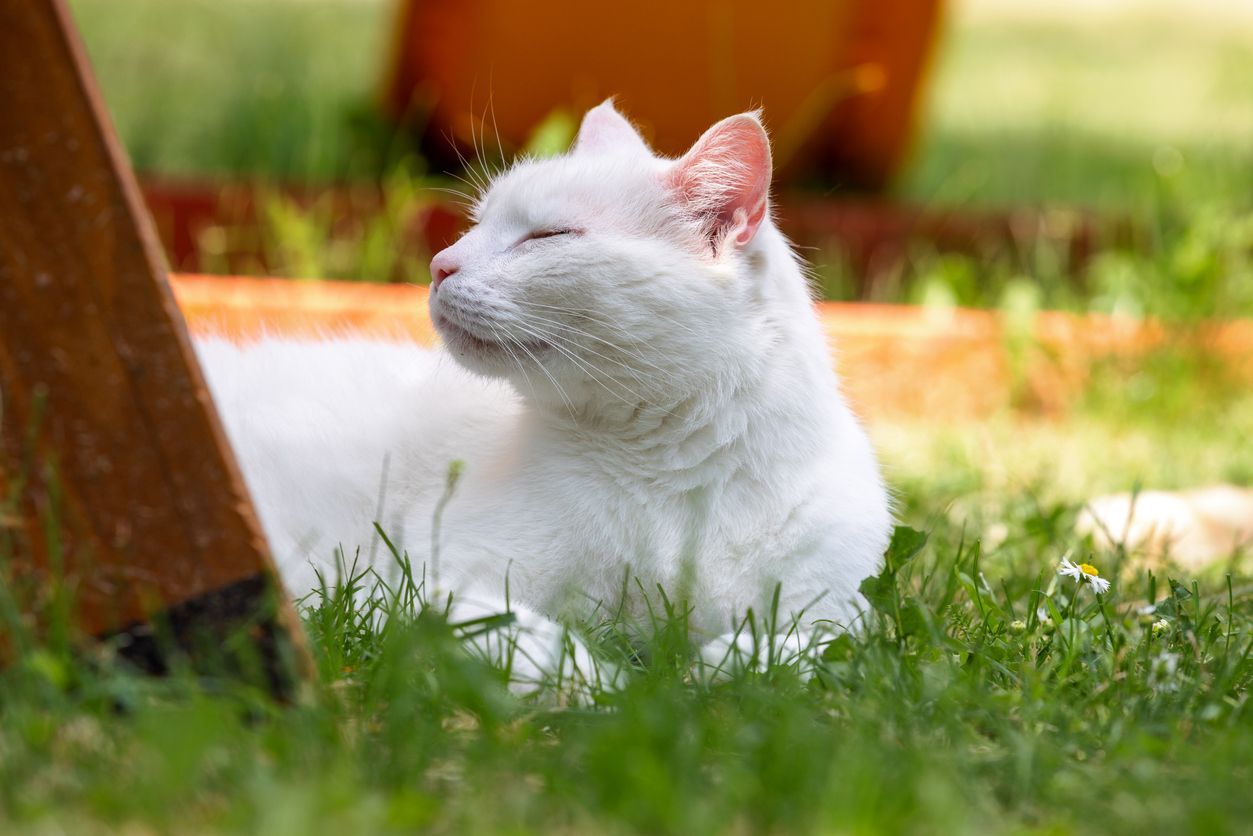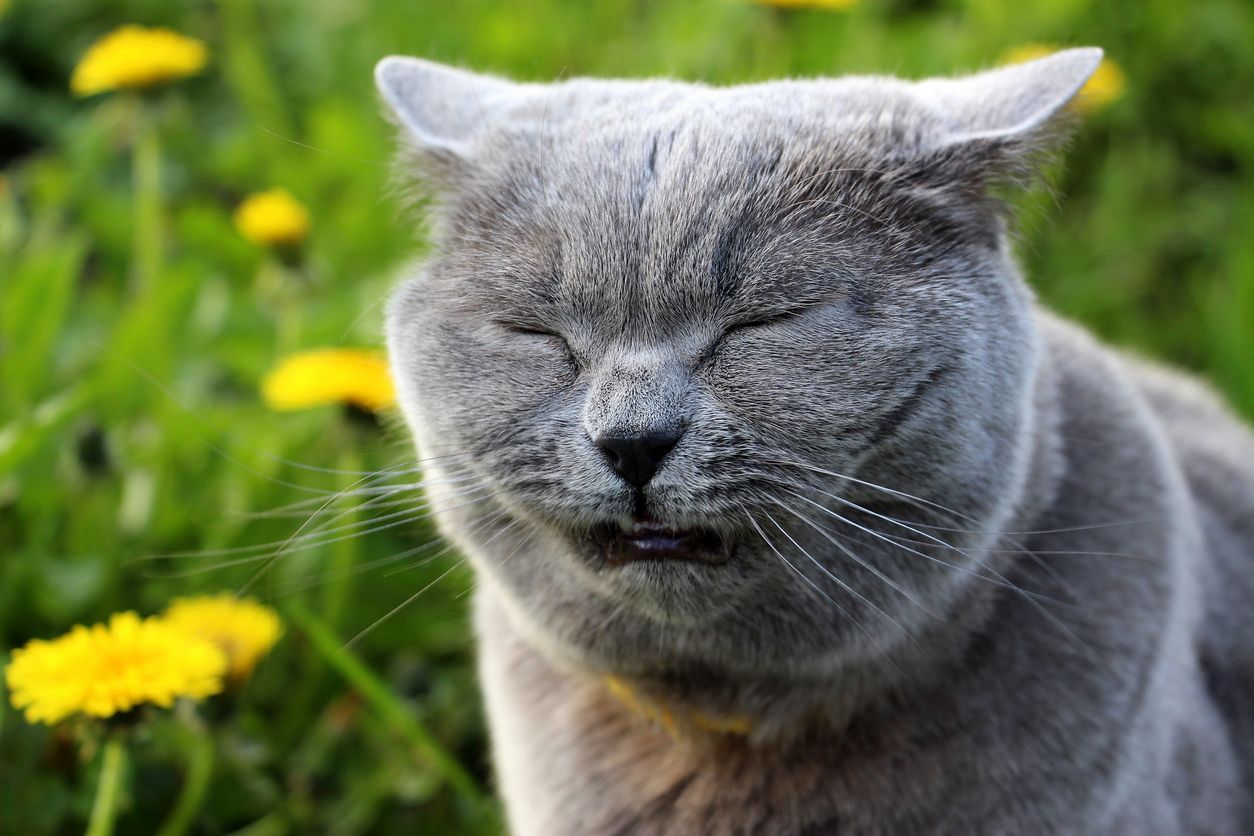Kidney failure in cats: Types, symptoms, and treatment

Kidney failure in cats is a serious condition where the kidneys are so damaged that significant symptoms result from their inability to function. Kidney failure, also referred to as renal failure, can have a major impact on your cat’s quality of life. If you are a cat owner, read on to learn:
- What are the types of kidney failure in cats?
- How do I know if my cat has renal failure?
- How are acute and chronic renal failure diagnosed and treated?
- How long can a cat live with chronic kidney disease?
While acute kidney injury occurs suddenly and has obvious and severe symptoms, chronic kidney disease is progressive, which means it worsens with time, and its early symptoms are more subtle. Symptoms can include increased thirst and urination, weight loss, loss of appetite, and bad breath. Because chronic kidney disease is so common in senior cats, it’s important for pet owners to learn about the disease and its common symptoms.
What is feline kidney failure?
Kidney failure, also known as renal failure, chronic kidney disease (CKD), and end-stage renal disease, is the life-threatening loss of kidney function. Kidney disease is a spectrum, with end-stage kidney failure being the extreme. Kidney failure in cats can be chronic or acute.
Chronic kidney disease (CKD)
Chronic kidney disease in cats is renal failure that has been going on for a long time. Other names for chronic kidney disease include:
- Chronic kidney failure
- Chronic renal failure
- Chronic renal insufficiency
In CKD, the kidneys wear out due to old age or chronic disease. “Kidneys are made up of millions of nephrons that filter waste from the bloodstream and help with other healthy kidney functions, such as preventing dehydration,” explains Dr. Jo Myers, a veterinarian on the Vetster platform. “Nephrons wear out and stop working due to wear and tear over time. Once approximately 65% of the kidney tissue is no longer functioning properly, symptoms of CKD become apparent.” CKD is permanent, progressive, and eventually fatal. Affected cats can still usually have a good quality of life with early detection and proper management.
Acute kidney failure
Acute kidney failure, also known as acute kidney injury (AKI) or acute renal failure, occurs suddenly and usually has severe symptoms. “Injury” is used instead of "damage" because the kidney tissue may recover, whereas damage suggests a permanent condition. Acute kidney injury may be caused by:
- Urinary obstruction
- Toxins such as lilies, NSAIDs and rodenticides
- Viral or bacterial Infections
- Heatstroke
- Lymphoma
- Kidney cancer
- Venomous snake bites
The degree of injury to the kidneys can be mild to severe, and, depending on the level of damage, it can sometimes be reversed, though acute kidney failure is often fatal. Other medical conditions associated with acute kidney failure include:
What are the symptoms of kidney failure in cats?
The kidneys have three main jobs: filtering waste products from the body, maintaining hydration and normal electrolyte balance, and creating the hormone that controls red blood cell production. Since different bodily functions depend on the kidneys functioning properly, symptoms of kidney disease are widespread. Signs of kidney failure in cats include:
- Increased thirst
- Excessive urination
- Lethargy
- Vomiting
- Lack of appetite
- Weight loss
- Pale or white gums
- Bad breath
The most common type of kidney failure in cats is chronic kidney disease, which is progressive, meaning the symptoms get worse over time as the disease advances. Signs of kidney disease aren’t noticeable until about 65% of kidney function has been lost. In cases of acute kidney failure or injury, symptoms are severe, and they’re often accompanied by other symptoms associated with the underlying cause, such as painful urination, sudden and frequent vomiting, or collapse.
How is kidney failure diagnosed in cats?
Veterinarians start diagnosing kidney failure by giving your cat a physical examination and discussing your cat’s symptoms with you. Your vet may recommend diagnostic testing to confirm renal failure and to rule out other possible conditions that have similar symptoms. Diagnostic tests may include:
- Blood tests
- Urine tests
- X-rays or ultrasounds
Because significant kidney damage has to occur before symptoms start to appear, chronic kidney disease is often diagnosed during routine wellness screenings for senior cats. Routine blood tests show when the kidneys aren’t working well, but additional testing may be necessary to determine how advanced the renal failure is, how severe the damage is, and what’s causing it. It’s important to get an accurate diagnosis to determine what treatment is needed.
Is renal failure common in cats?
Renal disease is very common in cats, especially in cats older than ten years of age. About 30% of cats over the age of ten have chronic kidney disease. This is usually due to the kidneys wearing out over time, even if the cat has been healthy and well cared for their entire life.
Acute kidney failure is uncommon in cats. The most common causes of acute kidney failure include:
- Urinary blockage from feline lower urinary tract disease
- Toxic plant consumption
- Ingestion of human or canine medications
- Antifreeze ingestion
Urinary blockages are common emergencies in cats, especially in males. Certain human medications and flea medications meant for dogs are also highly toxic. A cat’s own medication can also be toxic if it’s ingested in large amounts.
What are the treatment options for renal failure in cats?
Treatment varies based on whether the kidney failure is acute or chronic, how damaged the kidneys are, and what the underlying cause is.
Chronic kidney disease management focuses on relieving symptoms, slowing progression, and improving quality of life. Treatment may include:
- Anti-nausea and GI-protectant medications
- Fluid therapy
- Dietary management
- Appetite stimulants
- Oral medications for other symptoms
- Palliative care
Dialysis and kidney transplants are rarely used in cats but may be options for treatment. Cats with chronic kidney disease need to be monitored closely and have regular testing done with a vet so the treatment plan can be as effective as possible. As symptoms change or get worse, treatment of those symptoms may also change.
Treatment for cats with acute kidney injury usually requires intensive veterinary care in a hospital as well as specific therapy for the underlying cause. While some cats can be cured, other cats who survive acute kidney injury may end up with permanent kidney damage and require treatment for chronic kidney disease for the remainder of their lives.
Can kidney failure in cats be cured?
When a kidney transplant isn’t an option, chronic kidney failure can’t be cured or reversed and is eventually fatal. Treatment is focused on relieving symptoms and slowing progression. Acute kidney failure or injury can sometimes be reversed depending on the severity of the damage and the underlying cause.
What is the life expectancy for cats with chronic kidney failure?
Life expectancy for cats with chronic kidney disease varies depending on how early the disease is detected and how well it’s managed. In general, the earlier CKD is detected and treated, the longer a cat can live comfortably. Some cats with well-managed CKD can live several years after diagnosis. Every cat is different and responds to treatment differently. If you would like advice on your cat’s kidney failure or if you’re concerned about your feline companion’s kidney function, you can talk to a veterinarian on Vetster in an online virtual care appointment.
FAQ - Kidney failure in cats: Types, symptoms, and treatment
How long can cats live with kidney failure?
The life expectancy of a cat with chronic kidney failure varies depending on how early the condition is caught, how well it’s managed at home, and how well the affected cat responds to treatment. Cats with chronic kidney failure can live comfortably for several years after diagnosis.
How do cats act when their kidneys are failing?
Cats with kidney failure may start to vomit frequently, become lethargic, drink and urinate more than usual, and have a poor appetite. It’s important not to overlook changes in physical health or behavior simply because a cat is getting older. Low levels of red blood cells, low blood pressure, and increased levels of waste in the bloodstream due to ineffective renal function can all affect feline behavior.
What are the early warning signs of renal failure in cats?
Excessive thirst and urination are often the first signs of earlier stages of renal failure in cats. However, cats do not show symptoms of renal failure until over two-thirds of renal function has been lost. Decreased renal function can often be seen in routine blood tests at checkups with a veterinarian before symptoms are seen.




